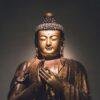Assam’s Vijayadashami, or Dussehra, is one of India’s most important Hindu festivals. This festival’s cultural and spiritual importance marks the end of the nine-night festival of Navratri. All over the country, people celebrate Dussehra with great enthusiasm and excitement. It represents the win of good over evil and is the essence of doing the right thing. To follow the Hindu lunar schedule, Dussehra will happen on October 12, 2024. This article details the traditions, cultural importance, and different ways that people in India celebrate Dussehra, giving readers a deeper understanding of what it all means.
What Does Dussehra Mean?
In Hindu mythology and society, Dussehra is a significant festival. From the epic Ramayana, we know that it represents Lord Rama’s win over the demon king Ravana. Since Lord Rama is a form of Vishnu, he stands for dharma (righteousness), virtue, and moral honesty. Ravana’s defeat means that good has won over evil, which makes Dussehra a festival of faith, hope, and success.
On Dussehra, people remember Lord Rama’s victory and Goddess Durga’s victory over the buffalo demon Mahishasura. This double meaning supports the festival’s central idea: light wins over darkness, and goodness wins over evil. The festival occurs on the tenth day of the Hindu months of Ashwin or Kartik. It is the last day of the Navratri festival, which is all about honouring the divine feminine.
How India Celebrates Dussehra?

Different parts of India celebrate Dussehra in other ways, with their traditions, customs, and rites. India has a lot of various kinds of celebrations that show off its rich cultural history. Here are some well-known ways that people celebrate the festival:
1) Performances by Ramlila
The enactment of Ramlila, a dramatic account of Lord Rama’s life, is one of the most well-known customs connected to Dussehra. Many people come to see these shows, which happen in many cities and towns. The nine nights of Ramlila usually end on Dussehra with the big climax, in which Lord Rama beats Ravana.
Not only are these plays fun to watch, but they also teach people about the morals and ideals in the Ramayana. Ramlila is a beloved custom because the bright costumes, dramatic dialogue, and lively music make for a fun time.
2) Processions for Vijayadashami
In many parts of India, big processions are held with statues of Lord Rama, Goddess Durga, and other very well-decorated gods. The streets become a colourful celebration of faith and culture during these processions, often including traditional music, dance, and bright outfits. People who worship the idols immerse them in rivers or seas to represent the return of the gods to heaven.
Not only are these processions beautiful to look at, but they are also a sign of devotion and group spirit. They strengthen the bond between participants, helping them feel like they fit in and know who they are.
3) Burning Effigies
Burning effigies of Ravana, his son Meghanath, and his brother Kumbhkaran are among the most famous parts of the Dussehra celebrations. This action shows that good has won over evil and warns that bad things will end. People build enormous effigies in public places and then set them on fire. Often, fireworks light up the sky with bright colours and sounds at night.
A lot of people come to see the burning of effigies, which is a potent reminder of how important it is to fight all kinds of evil. The hopes for a better, fairer world grow along with the fires.
4) Cultural Showcases
During the Dussehra festival, many towns put on fairs and shows with booths selling handmade goods, traditional sweets, and clothes for the festival. People get together with their families and friends at these fairs to enjoy tasty food, cultural shows, and shopping for festival gifts.
Local artists often show off their skills, which supports traditional crafts and raises awareness of how important it is to keep cultural history alive. These events are one of the best parts of the Dussehra celebrations because the air is full of joy, laughter, and celebration.
5) Dining and family gatherings
During Dussehra, families get together and eat together. Traditional foods change from place to place, including sweets like ladoos, halwa, and savoury snacks. Families get together to enjoy, eat, and give and receive gifts. This strengthens bonds and builds a sense of community.
In many homes, getting ready starts weeks ahead of time. In honour of the festival, families clean their houses, decorate colourful rangolis, and make unique dishes. An essential part of the festival is the feeling of community and celebration, which shows how important family ties and getting along with others are.
6) Celebrations of religion
People who believe in God perform religious practices during Dussehra, praying for health, wealth, and success. All over the country, temples are beautifully dressed, and special prayers and rituals are held to honour gods.
Giving food and sweets to less wealthy people is one way that people show their gratitude for their good fortune. Giving and caring are essential parts of Dussehra, and they remind people how important it is to help those in need.
Dussehra Date and Timings
Dussehra or Vijaydashami is celebrated on Saturday, October 12th, 2024. You can check the date, timings and muhurats below as per your location:
Vijay Muhurat Start-
Vijay Muhurat End-
Duration: 00 Hours and 46 Mins
Dashami Tithi Begins –
Dashami Tithi Ends –
What Can We Learn from Dussehra?

Dussehra teaches us many valuable things, such as:
Triumph of Good Over Evil: The main lesson of Dussehra is that good has won over evil, which inspires people to stand up for what’s right and do what’s wrong.
Faith is essential: The devotion and trust shown by Lord Rama’s followers show how powerful it is to believe in a good cause. They should inspire people to have faith in themselves and their ideals.
Community and Togetherness: Dussehra brings people together, creating a feeling of community. It stresses how relationships and working together can help you get through tough times.
Conclusion
As 2024 approaches and Dussehra approaches, it is essential to remember the festival’s greater meaning beyond the celebrations. The celebrations are undoubtedly important, but they should also be a time to think about and renew our beliefs. Dussehra allows us to celebrate our differences as a society and reaffirm our dedication to truth and right. By honouring what Dussehra is really about, we not only honour our ancestors’ traditions but also make way for a better future based on love, kindness, and respect for each other.



















Add comment